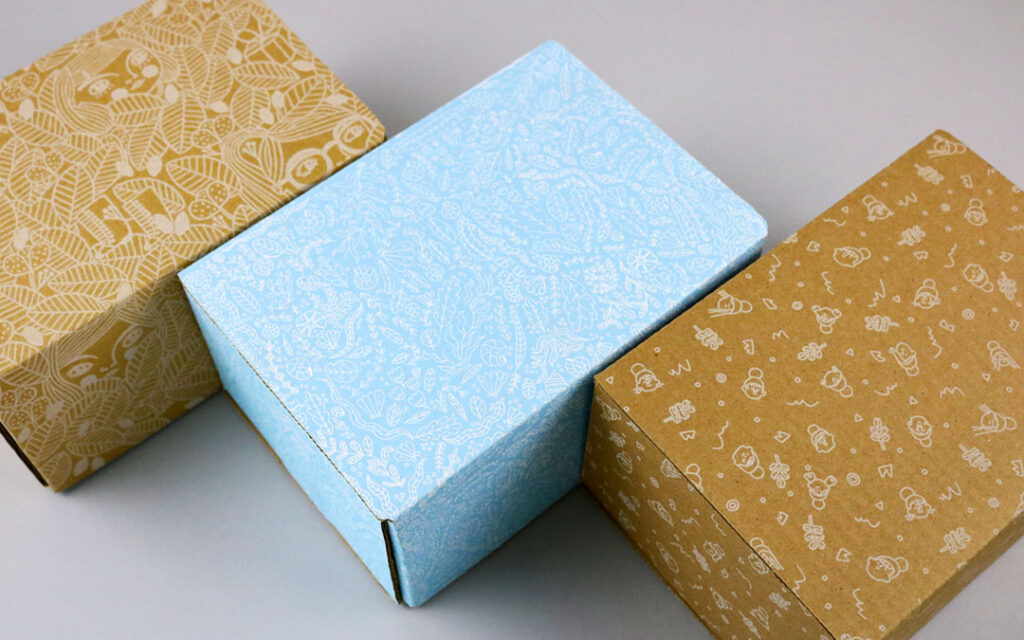How Can Custom Printing Options Help You Improve Your Packaging?
Whenever it comes to producing unique packaging that will capture consumers’ eye and provide an amazing unpacking process, packaging printing is critical. Printing on packing can be done in a variety of ways, including flexo or digital print straight onto corrugated, lithographic label printing and mounting, and die cutting.
On both digital and in-store shelves, using unique printed graphics on your packaging may enable it to stand out from the competition. Colorful and accurate coloring, a variety of printed materials to choose from, and impressionistic printing that can be tailored to a variety of aesthetic preferences may all continue to promote your perfect packaging design to reality.
The use of muted colors, soft hues, and drawings, which reflect the prevalent design style of minimalism, are expected to be prominent package printing design trends in the future years. Here are four alternative techniques for custom package printing, together with information on their procedures, unique benefits, best-use scenarios, and variances.
1. Direct Flexo Printing
Direct flexo printing is a high-speed, super high method that applies images and text to surfaces using an imprinted plate attached to a cylinder. On the movable image carrier, image-bearing parts of your design are elevated over non-image-bearing sections. In-house ink mixing and accurate color matching to your branding and label colors ensure that the finished package is precisely what you imagined. Direct flexo printing is a reliable and cost-effective technology for quickly and precisely printing solid colors, patterns, and basic drawings onto large orders.
2. Digital Printing
A laser or inkjet is used to create a digital-based picture instantly onto a material in digital printing. Because digital printing does not need printing plates, it is possible to make modifications to your design rapidly. For the same reason, installation is easier and consumes less effort.
This package printing process is capable of producing vibrant colors as well as more sophisticated visual and design components such as perfect gradients and shades with no drop-off. Digital printing is preferable for more specialized short to medium runs, but direct flexo printing is ideal for large contracts due to its flexibility throughout the printing process.
3. Label Printing and Mounting
The design may also be placed on a tag and then mounted onto your final package as an alternate to printing. Large size labels may be produced for complete mounting or as spot labels to complement your printed pictures. The lithographic laminated method is frequently used to give corrugated distinctive surfaces, such as soft touch or shiny boxes. Lithography is also excellent for generating photographic-quality package designs.
Lithographic labeling print is recognized for its customization options and various possibilities for generating distinct textures, but it is perhaps one of the most expensive package printing alternatives due to the additional processing involved. Therefore, if your concept is very particular or imagistic in character, or if specialized coatings like foil stamp, embossing, or metallic ink are required, its precise, high-quality imagery may be the ideal option for your custom packaging. Putting spot labels on full-wrap labeled or printed corrugated may provide your custom packaging or shop displays eye-catching dimensions and distinct materials.
4. Die Cutting
Die cuts have been used in package printing to produce unique shapes and patterns. A metal die cuts the required form from label material and discards the rest. Die cutting may be done in a variety of ways, involving flatbed and rotary die cutting.

The flatbed process, which involves pressing the die into a piece of material, is ideal for low-volume, larger-format package printing applications. It’s also great for working with thicker materials. The rotary technique includes cutting material using a rotating die connected to a magnetized cylinder. Because of its variety, speed, and accuracy, rotary die cutting is an excellent choice for custom designs. As a result, the rotary technique is effective for swiftly cutting complicated shapes and enabling short turnaround times for package printing.
Because die cutting is a complicated procedure, you’ll want to consult a professional when developing your unique designs to assure that the label will turn out exactly how you want it once it’s designed and cut.
You can produce distinctive and eye-catching customized packaging for both delivery and in-store use by using the package printing skills. With a focus on personalized solutions, you can precisely match your unique vision. Experts may collaborate with you to develop durable and long-lasting packaging that is consistent with your company and protects your goods while aesthetically attracting customers.
One thought on “What Various Packaging Printing Options Are There?”